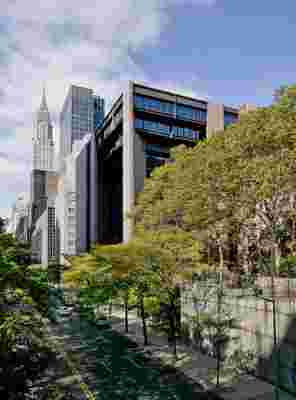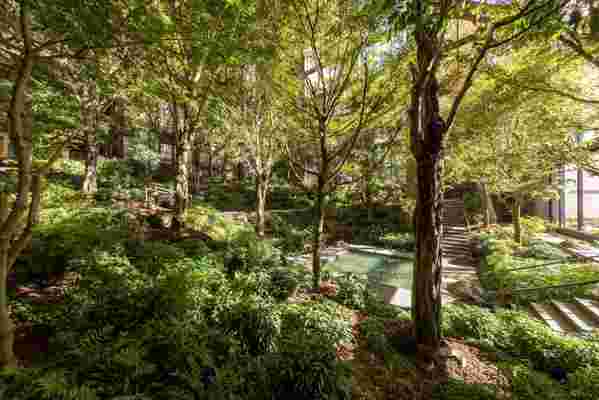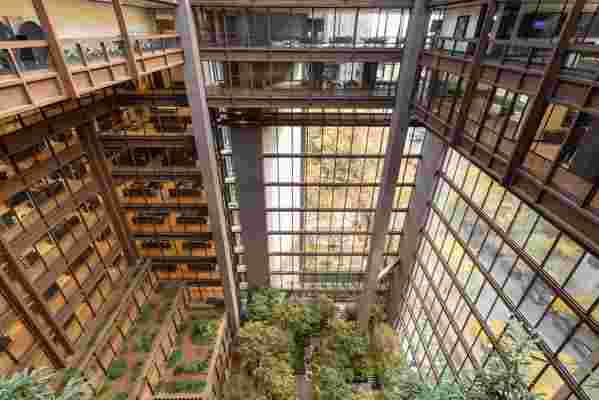The Ford Foundation building offers New Yorkers a tropical vacation: a lush 10,000-square-foot garden at the base of a towering atrium. The garden, conceived and executed by the great midcentury landscape architect Dan Kiley, has long been open to the public, but the foundation didn’t advertise that fact. Now, at the direction of foundation President Darren Walker, that’s about to change. Sign “totems” on both sides of the building—which runs from 42nd to 43rd Streets east of Second Avenue—will invite the public in. Revamped by Florida landscape architect Raymond Jungles, the garden has improved wheelchair accessibility and includes new features for the vision-impaired. It will even be open on Saturdays, a first.

The 1968 building's exterior, designed by architects Kevin Roche and John Dinkeloo.
But Walker has changed much more than the garden. The building, completed in 1968, has been widely admired as a model of what modernists can do with lush materials; architects Kevin Roche and John Dinkeloo employed pinkish Dakota granite and patinated Cor-Ten steel to give the building gravitas. Indeed, the Ford Foundation building was about image-making as much as efficiency. Visiting the president of the foundation required stops at three separate receptions areas. The president’s inner office was large enough for 40 people.

The 10,000-square-foot revamped garden at the base of a towering atrium.
Walker, who became president of the foundation in 2013, values equality and inclusion over elitism and pomp. So when the building needed renovations—the city had given the Foundation until 2019 to improve fire safety and remove asbestos—Walker saw an opportunity. Working with architects at Gensler (including partner Maddy Burke-Vigeland), he reinvented the building as a 21st-century workplace. The former president’s suite has been turned into a pair of conference rooms. Most of the private offices were demolished; employees now sit in low cubicles. And the building—renamed the Ford Foundation Center for Social Justice—is now partly occupied by other progressive organizations.

An aerial view of the atrium and reconfigured offices.
Repurposing interior space while respecting the architects’ intentions required deftness. “It’s incredibly strong but also incredibly delicate,” says Burke-Vigeland of the building. Still, the renovations to the work spaces involved compromises. Warren Platner designed thousands of pieces of furniture for the building’s rows of private offices. As many of those pieces as possible were refurbished and repurposed; others were distributed to nonprofits around the city. And the cubicles, by Knoll, look a bit too ordinary for such an extraordinary building (despite their brass trim, a nod to the original interior design). On the other hand, the removal of walls means every employee now has a view of the atrium. “We hope,” says Burke-Vigeland, “to have given this revered building new life.”
RELATED: This Pritzker Prize Winner's 70-Year Career Started With a Pigsty
